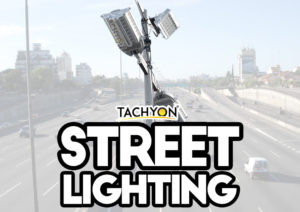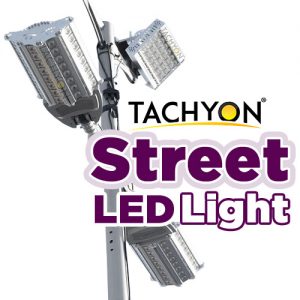What is Surge
Inrush current refers to the peak current or overload current that is much larger than the steady-state current generated at the moment the power is turned on or when the circuit is abnormal.
In electronic design, surge mainly refers to the strong pulse generated at the moment the power supply (only mainly refers to the power supply) just turned on. Because the linearity of the circuit itself may be higher than the pulse of the power supply itself; or due to the power supply or other circuits in the circuit. Part of the interference by itself or external spikes is called a surge. It is likely to cause the circuit to burn out at the moment of a surge, such as PN junction capacitance breakdown, resistance blown, etc. The surge protection is to use linear components to high For protection circuits designed for high frequency (surge) sensitive design, simple and commonly used capacitors in parallel and series inductance are used.
Causes of surge
The sources of surges in the power supply system are divided into external (causes of lightning) and internal (start and stop of electrical equipment, failures, etc.).
External causes
Lightning surge overvoltage
The surge caused by lightning is the most harmful. During lightning discharge, dangerous overvoltage may occur within the range of 1.5~2KM centered on lightning. The (external) surge caused by lightning is characterized by a single-phase pulse type with huge energy. The voltage of the external surge can be rapidly increased from hundreds of volts to 20000V in a few microseconds, which can be transmitted over a long distance. According to ANSI/IEEE C62.41-1991, the instantaneous surge can be as high as 20000V and the instantaneous current can reach 10000A. According to statistics, the surges outside the system mainly come from the impact of lightning and other systems, accounting for about 20%.
(1) Induced lightning surge overvoltage: the high-speed changing electromagnetic field produced by lightning strikes, the electric field radiated by lightning acts on conductors, and induces high overvoltages. This type of overvoltage has a steep front and decays quickly.
(2) Direct lightning surge overvoltage: Direct lightning strikes on the power grid. Due to the huge instantaneous energy and super destructive power, there is no equipment that can protect against direct lightning strikes.
(3) Lightning conduction surge overvoltage: It is conducted by a remote overhead line. Because the equipment connected to the power network has different suppression capabilities for overvoltage, the conduction overvoltage energy decreases with the extension of the line.
(4) Oscillating surge overvoltage: The power line is equivalent to an inductance, and there is a distributed capacitance between the ground and adjacent metal objects, forming a parallel resonance circuit. In the TT and TN power supply system, when a single-phase ground fault occurs, due to High-frequency components appear to resonate and produce very high over-voltage on the line, which mainly damages the secondary instrument.
A direct lightning strike is the most serious event, especially if the lightning strikes an overhead transmission line close to the user entrance. When these events occur, the overhead transmission line voltage will rise to hundreds of thousands of volts, usually causing insulation flashover. The distance of lightning current transmission on the power line is one kilometer or more, and the peak current near the lightning strike point can reach 100kA or more. The current of the low-voltage line at the user inlet can reach 5kA to 10kA per phase. In areas with frequent thunder and lightning activities, power facilities may suffer from direct lightning strikes several times a year, causing severe lightning currents. However, the above incidents rarely occur in areas where underground power cables are used for power supply or in areas where lightning activities are not frequent.
Indirect lightning strikes and internal surges are more likely to occur, and most of the electrical equipment damage is related to them. Therefore, the focus of power surge prevention is to absorb and suppress this part of the surge energy.
Internal reason
Operating surge overvoltage
The causes of internal surges are related to the startup and shutdown of the equipment inside the power supply system and the failure of the power supply network operation:
In the power system, due to the operation of the circuit breaker, the input and removal of the load, or the system failure and other changes in the internal state of the system, the system parameters will change, which will cause the internal electromagnetic energy conversion or transmission transition process in the power system. Overvoltage has occurred. The surge in the system mainly comes from the impact of the electrical load inside the system, which accounts for about 80%. The causes of internal overvoltage caused by the power system can be roughly divided into:
(1) Input and removal of large electric loads;
(2) Input and removal of perceptual load;
(3) Input and removal of power factor compensation capacitor
The power supply system will cause internal surges due to the start and stop of high-power equipment, line failures, switching actions, and operation of variable frequency equipment, which will adversely affect electrical equipment. In particular, microelectronic equipment such as computers and communications has brought fatal impact. Even if it does not cause permanent equipment damage, abnormalities and pauses in system operation will bring serious consequences. Such as nuclear power plants, medical systems, large-scale factory automation systems, securities trading systems, telecommunications bureau switches, network hubs, etc.
Surge performance
Surges generally exist in the power distribution system, which means that surges are everywhere. The main manifestations of surge in the distribution system are:
—Voltage fluctuation
—Under normal working conditions, machinery and equipment will automatically stop or start
—There are air conditioners, compressors, elevators, pumps or motors in electrical equipment
—The computer control system often resets without reason
—The motor often needs to be replaced or rewinded
—The service life of electrical equipment is shortened due to failure, reset or voltage problems
Characteristics of surge
The surge time is very short, probably in the order of picoseconds. When a surge occurs, the amplitude of the voltage and current exceeds more than twice the normal value. Because the input filter capacitor is quickly charged, the peak current is much greater than the steady-state input current. The power supply should limit the surge level that AC switches, rectifier bridges, fuses, and EMI filters can withstand. Switch the loop repeatedly, the AC input voltage should not damage the power supply or cause the fuse to blow.
The harm of surge
Destruction principle and phenomenon:
The causes of surges (transient pulses) include lightning, poor grounding, inductive load switching, mains troubleshooting, and electrostatic discharge (ESD), which may result in data loss (or damage) or even equipment damage. Among them, lightning is the most destructive. The surge caused by lightning strikes and the instantaneous discharge or arc discharge generated by the contact switch has the following phenomena:
Arcing: leaving obvious arc traces on the damaged parts,
Corona: There are obvious traces of electrical corrosion on the surface of the insulator, and the insulation of the corroded part is reduced.
The IC and other components of the control circuit are damaged,
The rectifier components and voltage stabilizing components of general electronic equipment and household appliances are damaged,
Grounding fault causes the equipment to be electrified (single-phase grounding): causing a short circuit between equipment phases (short circuit between motor phases).
Hazard classification
There are two main types of surge hazards: catastrophic hazards and cumulative hazards.
Catastrophic hazard: If a surge voltage exceeds the equipment’s bearing capacity, the equipment is completely destroyed or its lifespan is greatly reduced.
The usual insulation voltage of a motor is about twice the normal working voltage plus 1000V, so the insulation voltage of a 220V motor is generally 1500V. Surge continuously impacts the insulation layer of the motor, causing the insulation layer to be broken down.
Cumulative hazards: The cumulative effects of multiple small surges cause the performance of semiconductor devices to decline, equipment failures and shortened lifespans, and ultimately lead to production shutdowns or reduced productivity.
Impact on equipment
Existence of surges: Surges generally exist in the power distribution system, which means that surges are everywhere. The main manifestations of surge in the distribution system are:
Voltage fluctuation
Under normal working conditions, machinery and equipment will automatically stop or start
There are air conditioners, compressors, elevators, pumps or motors in the electrical equipment, and the computer control system often resets without reason
The motor often needs to be replaced or rewinded
Electrical equipment has shortened service life due to failure, reset or voltage problems
Impact of surge on equipment: The impact of surge on sensitive electronic and electrical equipment has the following types:
damage
Voltage breakdown semiconductor device
Destroy the metallized surface of components
Destroy the printed circuit board printed circuit or contact point
Destroy the three-terminal dual SCR/thyristor…
interference
Locked, thyristor or triac out of control
Partially damaged data file
Data processing program error
Errors and failures in receiving and transmitting data
Failure of unknown cause…
Premature aging
Parts age in advance and the life of electrical appliances is greatly shortened
Output sound quality and picture quality are degraded
Surge protection
Surge protector, also called lightning protector, is an electronic device that provides safety protection for various electronic equipment, instruments, and communication lines. When a spike current or voltage is suddenly generated in the electrical circuit or communication circuit due to external interference, the surge protector can conduct and shunt in a very short time, thereby avoiding the surge to other equipment in the circuit.
Basic element
Discharge gap
(Also called protection gap):
It is generally composed of two metal rods exposed to the air separated by a certain gap. One of the metal rods is connected to the power phase line L1 or the neutral line (N) of the required protection equipment, and the other metal rod is connected to the grounding wire ( PE) phase connection, when the instantaneous overvoltage strikes, the gap is broken down, and a part of the overvoltage charge is introduced into the ground, avoiding the voltage increase on the protected equipment. The distance between the two metal rods in the discharge gap can be adjusted as required, and the structure is relatively simple, but its disadvantage is poor arc extinguishing performance. The improved discharge gap is an angular gap. Its arc extinguishing function is better than the former. It relies on the electric power F of the circuit and the rising effect of the hot air flow to extinguish the arc.
(To Be Continued)



